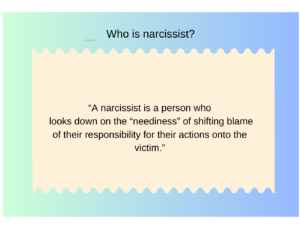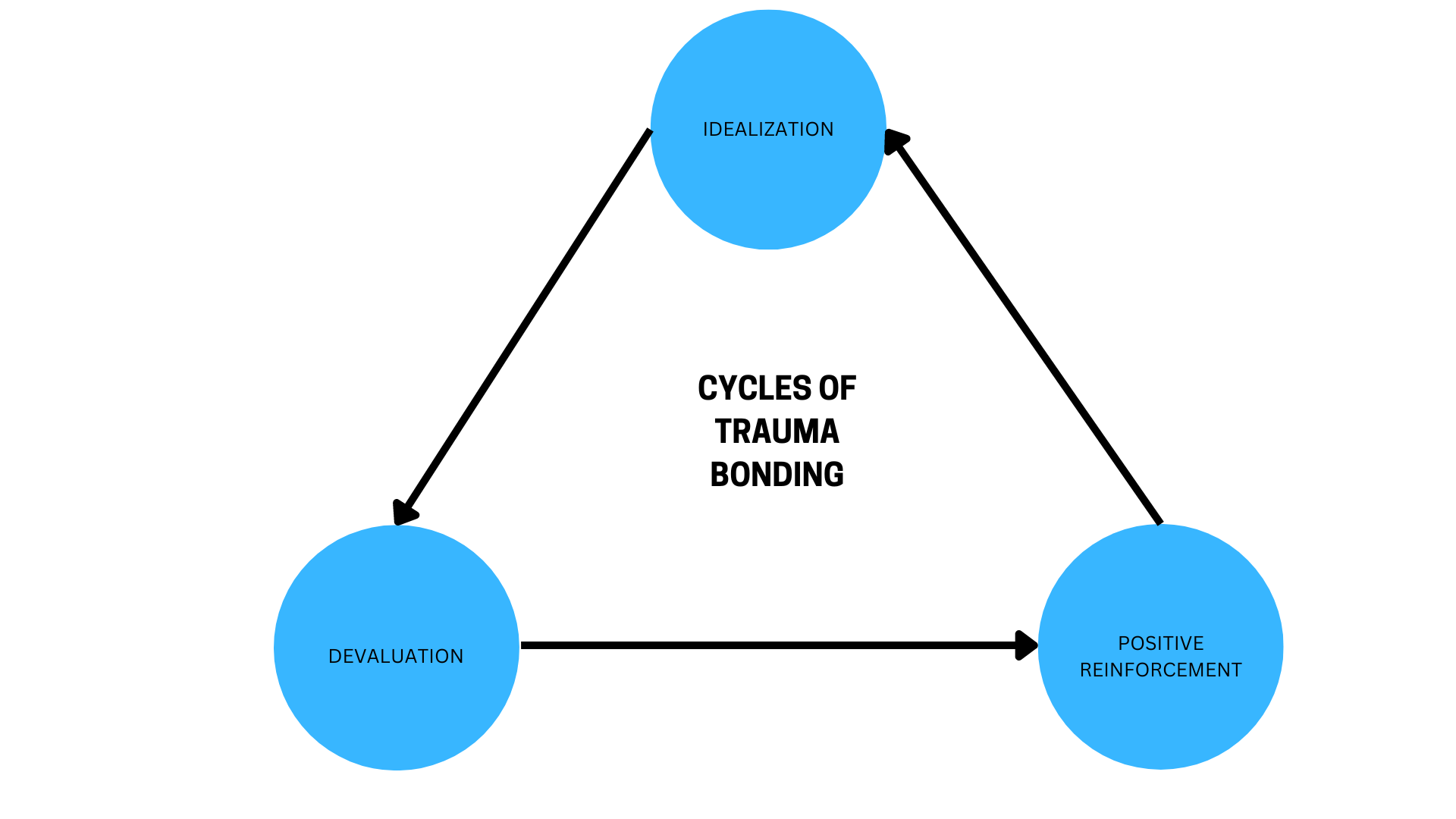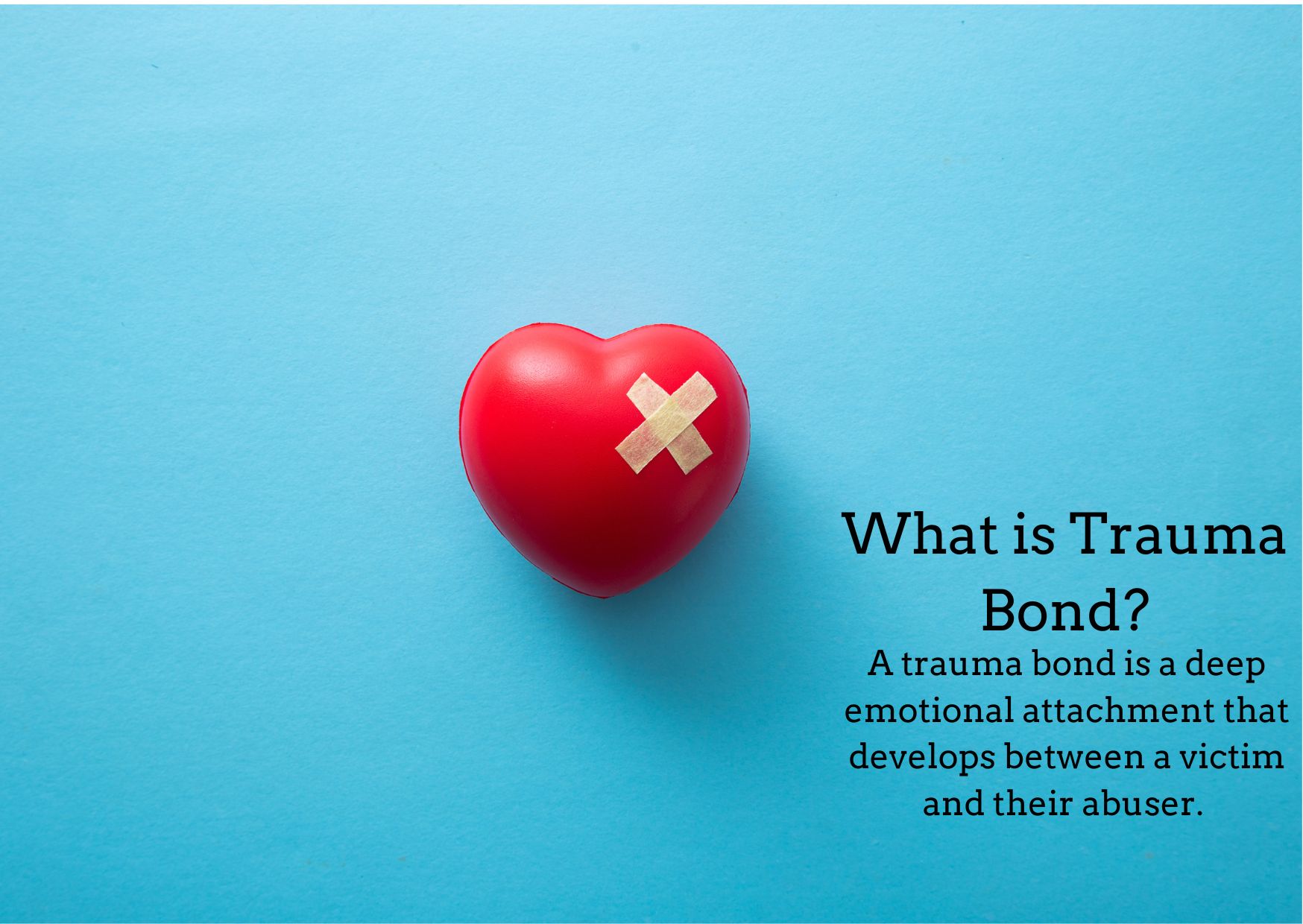What is Trauma?
Trauma is something that we experience, a stressful and distressing event that is difficult to handle with and may lead us to unhealthy state of mind.
What does Trauma Bonding mean?
Trauma Bonding is said to be a strong attachment that is developed between the abuser and the victim which further forms a cycle of physical and emotional abuse creating intermittent affection or manipulative kindness to create a powerful emotional dependency.
Trauma Bonding is a complex psychological situation which can form in various relationship as such;
- In Romantic relationship
- Familial Relationship
- Friendships
- Work-Place Relationships
- Hostage situations, etc.
Signs and symptoms of Trauma Bonding:
There are many signs and symptoms that are shown by couples or people involved in trauma bonding.
- Justifying the Abuser’s Behavior
In this case the victim keeps defending about the abuser’s behavior inspite of series of abuse,
making excuses for their behavior and blaming themselves for the abuse. - Confusing Behavior
The victim may feel confused about the reality of the situation and
try to deny the several abusive behavior shown by the abuser. - Strong Emotional Attachment
Despite the cycle of abusive behavior, the victim still feels a sense of deep connection
and a strong sense of loyalty for the abuser. - Fear of feeling left alone
The victim finds it hard to leave the abuser due to his/her manipulative tactics, resulting in feeling: the fear of the abuser,
the fear of being alone and the fear of not being validated and believed.
What is Trauma Bonding with narcissist?

Trauma bonding is a strong emotional attachment formed when abusers switches between rewards and punishment’s, creating a cycle of intermittent reinforcement for the victim. Abusers may criticize, belittle,
manipulate and accuse you of being the cause of their own abusive behavior.
Narcissists are very good at managing image of themselves. They pretend to be nice, pleasant, and supportive but underneath of this is a cruel, cold blooded abusive person.
How is Trauma Bond created?
This bond is created through a cycle of idealization, devaluation and positive reinforcement, making it difficult for the victim to break free from the relationship despite the series of abuse, leaving the victim to be confused of their own sense of reality.

Characteristics of Trauma Bonding with Narcissist:
At first the narcissist showers the victim with the unconditional affection, excessive attention and flattery(praising someone in insincere way) at the beginning of the relationship which creates a powerful emotional connection and dependency. Then, the narcissist present themselves as desirable and willing to be into you to form a strong dependency and to make victim feel special and incredibly valued.
After forming a kind of dependency, abusers start switching between being kind and cruel, leaving the victim to the hope that the they/abuser will return back to the affectionate behavior again.
So many times we can hear people who are aware of someone who is with that unhealthy narcissistic person and they say just to get away with that person, no contacts, no phone call, everything over. But, it’s just not quite that simple with everyone because everyone seems to have different experiences.
Specially when you are involved with a malignant narcissist, it’s almost like you have a cancer that is just growing in the inside of your personality and it affects every parts of your lifestyle and it could be that as you become aware of this cancer, you are already so attached to that person that it’s hard to extricate yourself from that (especially when that narcissist that you are attached to maybe a parent).
There are many possible circumstances like children involved in a situation like this. It can also be the friendship that narcissistic person completely takes over and starts running your life.
Another thing that can be common in trauma bonding is when the negatives show up but in this bond often those negatives are either minimized or explained away and over time there’s this false optimism that might begin to emerge.
And then the things like guilt, shame and threats become very prominent. It can be like threatening to expose with the secret shared before and you become scared with that situation about what that narcissist might do to destroy your other relationships.
Another common characteristics is that the victim can be systematically pulled into an ongoing pattern of codependency that keep them tied to that abuser in the fear of having another failed relationship, or it can be the fear of what other people are going to think of him/victim.
Breaking the Trauma Bond with a narcissist:
When we talk about having a Trauma bond, we talk about the inability to extract yourself from a toxic, divisive, unhealthy relationship. It can be that sometimes you get bonded with that person in a traumatic way because maybe you yourself were not in a good place, and in your full place of security and personal stability that you can get caught up in this Trauma Bond.
It is possible to get out from that trauma bond but it’s not going to be easy, and it’s going to require some major sacrifices and determination on your side.
- You need firmness and determination to acknowledge what is happening and reflect on that.
- Abuse isn’t your fault; no need for embarrassment because you are not responsible for their feeling or for what they do.
- Talk to trustworthy people about it. No need to keep their secrets.
- If possible, go no-contact or very low contact (they don’t change).
- There will be pain and difficulty, just like a necessary surgery but there can be good on the other side.
- Aim for living with dignity, respect, and civility.
- Practice self-care, positive self talk and let people help you along the way.
Withdrawal symptoms of breaking Trauma Bond:
Breaking a Trauma Bond with a narcissistic person can be challenging because the victim adjusts his/her life without the abuser and the toxic situationship that he/she was involved in.
The different sorts of emotional symptoms that the victim have to face through are:
- Loneliness
- Anxiety and panic attacks due to breakthrough of a pattern.
- Feeling of sadness, hopelessness, and fear of opening with new peoples.
- Grief of loosing the person that victim once believed truly while abuser was trying to make the victim just another prey in his non ending loop/cycle.
- Difficulty focusing on other aspects of life.
- Flashbacks and intrusive thought of events from that traumatic relationship.
- Feeling the strong urge to reconnect with the abuser, checking his socials and unable to fully detach from his thoughts.
- Nightmares and difficulty in sleeping.
If you are having such symptoms then you should contact someone you can trust for help or seek some professional help from the therapists.
Practice self-care, know that it takes time to give up the situation in which you were involved from a very long time.
Have faith in yourself and set boundaries for yourself so that you don’t attract the same type of persons in your life.
Sings that it’s Trauma Bonding not love:
- Sends mixed signals.
- Values his/her independence greatly.
- Devalues you.
- Uses distancing strategies, emotional and physical.
- During a disagreement, needs to get away or explodes.
- Has difficulty talking about what’s going on between you two.
Signs of a Healthy and Loving Relationship:
- Reliable and consistent.
- Makes decisions with you.
- Communicates relationship issues well.
- Can reach compromise during arguments.
- Not afraid of commitment and dependency.
- Doesn’t view a relationship as a hard work.
- Naturally expresses feelings for you.
- Introduces friends and families early on.

